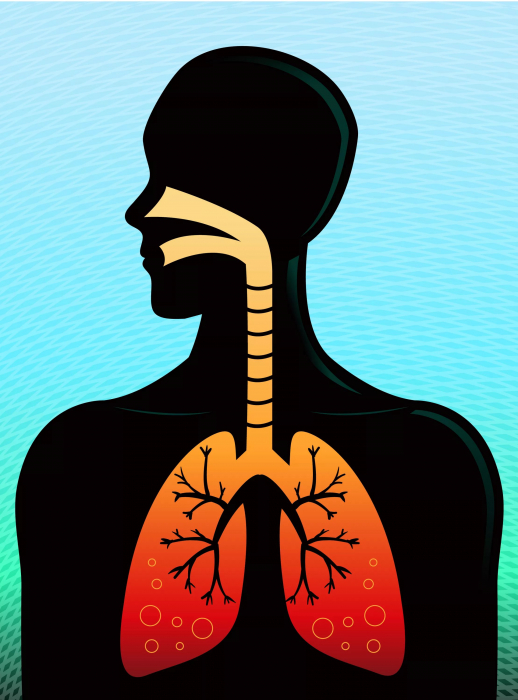Respiratory gymnastics with pneumonia helps to cope with the disease, activating the body's natural forces, improving the result of the drugs used. With daily exercise, relief occurs on 2-3 days.
Material Content:
The effectiveness of breathing exercises in pneumonia

Breathing exercises can prevent the development of complications.
Simple exercises will help:
- improve lung ventilation;
- to intensify the excretion of mucus, another pathological discharge from the bronchi;
- prevent the formation of adhesions;
- normalize blood circulation in the lung tissue;
- restore breathing rhythm;
- eliminate stagnation;
- normalize well-being.
Respiratory gymnastics with pneumonia can be used at any age, if there are no contraindications.
Contraindications

Changes to the tactics of treating pneumonia can only be made after consultation with a specialist.
It is forbidden to do breathing exercises if the following phenomena are observed:
- pathology of the cardiovascular system;
- lung abscess;
- risk of pulmonary hemorrhage;
- heat;
- difficulty breathing.
The load when performing recreational activities at home is recommended to be increased gradually, focusing on your well-being. Ventilate the room before doing the exercises.
Adult Exercises

Before embarking on physiotherapy exercises, it is recommended that you lie down on the mat and take 40-50 slow breaths in order to prepare the lung tissue for the upcoming load.
Performing initial exercises from any position:
- Take a deep breath through your mouth, hold your breath for a few seconds, and exhale slowly through your tightly pressed lips.
- Inhale through the nose and exhale intermittently through the mouth.
- Take air into the lungs and exhale while pronouncing the consonants. The greatest efficiency is observed when pronouncing "w, p, m".
Begin with 10 repetitions, gradually increasing the load.
Note! With the active implementation of a set of exercises for the lungs, dizziness and nausea may occur. Unpleasant symptoms disappear within 10-15 minutes after completion of classes.
If during the initial exercises there were no unpleasant sensations, you can proceed to more serious loads:
- Hand breathing control. In the prone position, inhale deeply and exhale slowly, pressing your hands on the stomach and chest. In one approach, you can do 5-10 repetitions.
- Twists and turns. Sit on a chair. Take a deep breath. As you exhale, rotate the body. One approach - 8 movements.
- Pulling the knees to the chest. Stand up, stretch your arms above your head. As you exhale, alternately pull one knee or the other to the chest. Recommended 10 movements with each foot.
- Slopes. Stand up, put your hands on your belt. As you exhale, spring to the side. One approach - 10 repetitions.
At the end of exercise therapy, it is recommended to slowly walk around the room for 2-3 minutes to even out breathing.
Important! Exercises should be discontinued if, during their implementation, the pulse quickens and the breathing rhythm is disturbed.
The proposed complex of respiratory physical education is a good prevention of congestive pneumonia. Experts recommend performing it once a week to reduce the likelihood of developing pulmonary pathologies.
For children

Children exercise therapy will help not only to overcome pneumonia, but also prevent the development of this disease in the future. For the smallest, it is recommended to perform one exercise in a standing position. To do this, the child needs to take a deep breath and exhale slowly while leaning forward.
After 5 years, children are allowed to perform a set of exercises for adults, but with fewer repetitions.
If you can’t persuade the child to do gymnastics, experts advise you to do it in a playful way, during which to say interesting tongue twisters or sentences, gradually speeding up the pace. And also it is possible to suggest the kid to blow soap bubbles.
Any quiet exercises during which the child will inhale deeply and exhale air for a long time can replace respiratory gymnastics and serve as an impetus for a speedy recovery.
When treating pulmonary diseases, it is important to prevent the development of complications. When charging for the lungs and following the recommendations of the attending physician, pneumonia will recede, health will be restored.












